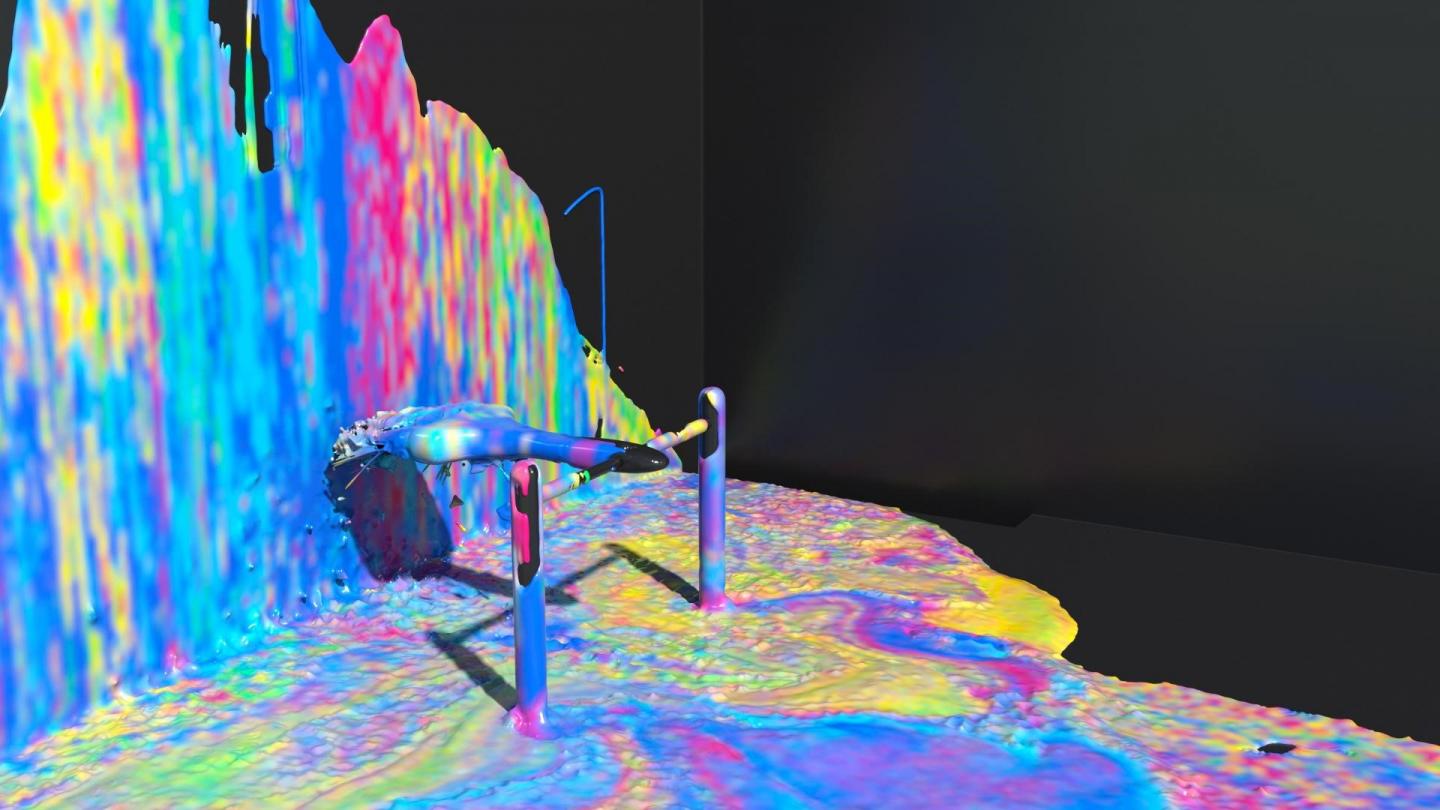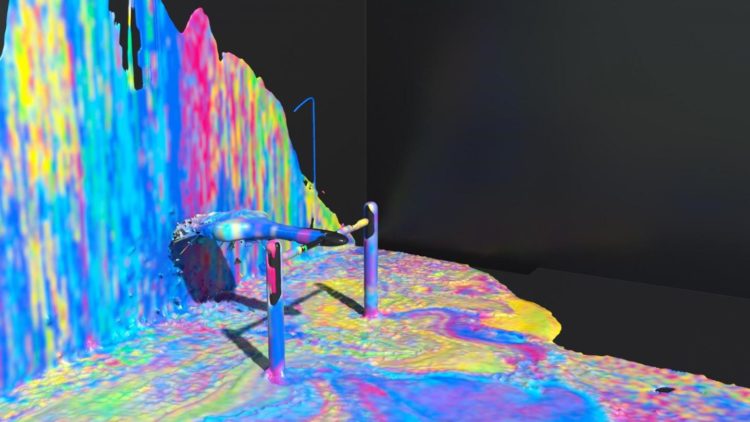New method to be presented at SIGGRAPH Asia

Credit: ACM SIGGRAPH Asia
Simulating the physics behind the movement of liquids and how fluids–thick or thin–interact with other objects is a key problem in visual effects. Bringing to life such scenarios as a brush stirring and spreading oil paint onto a canvas or spaghetti tossed in pasta sauce involves sophisticated computational modeling. These types of scenarios, in particular, are difficult to simulate due to the complex rheology of liquid–how its shape changes and transforms with movement–and the intricate interactions between the liquid and the strands.
A team of computer scientists are addressing this problem in computer graphics with a novel, multi-scale framework that realistically and precisely imitates the complex dynamics of strands interacting with so-called shear-dependent liquids, such as mud, oil paint, melted chocolate, or pasta sauce. The researchers, from Columbia Engineering and the University of Waterloo, are set to present their work at ACM SIGGRAPH Asia, held Nov. 17 to 20 in Brisbane, Australia. SIGGRAPH Asia, now in its 12th year, attracts the most respected technical and creative people from around the world in computer graphics, animation, interactivity, gaming, and emerging technologies.
Unique to this work is the precise modeling of the complexity of fluid-strand dynamics. Imagine for instance a bowl of spaghetti, and attempting to animate how much sauce clings onto various strands of the pasta as it is being twirled and lifted out of a bowl with a fork. To simulate such a scenario, the researchers’ method accounts for the fluid-strand interaction occurring across many scales–at both the small scale for thin strands and their surface flows and the large scale for bulk fluid.
“The multiscale nature of this problem poses a key challenge,” says Yun (Raymond) Fei, lead author of the work who recently completed his PhD in computer science at Columbia. “It demands our simulation model to handle both a large chunk of fluids moving around and the small, detailed motions by strands and their surface flows.”
Fei’s collaborators include coauthors Christopher Batty of the University of Waterloo-Canada and from Columbia Engineering, Eitan Grinspun and Changxi Zheng.
Expanding on previous work in animating wet hair, this new computational framework accounts for the volume change of the liquid as it passes through strands and the momentum exchange between the strands and the liquid. Their framework also accounts for cohesion between strands and how the fluid motions affect the strand motion and vice versa. The framework consists of three components: a model that simulates the fluid flowing on the surface of strands, a model that simulates the motion of individual hair strands and their collisions (e.g. the bowl of spaghetti and sauce), and a model that simulates bulk fluid moving as a continuum, such as water flowing from a faucet.
“Our algorithm brings together multiple physical models at both fine and large scales, and enables the simulation to capture highly complex, rich and multi-physics phenomena in fluid-strand interactions,” says Zheng, associate professor of computer science at Columbia.
The researchers demonstrated their method on a wide range of materials and a number of examples, including challenging scenarios involving splashing, shaking, and agitating the liquid which causes the strands to stick together and become entangled. For example, to illustrate the cohesive and frictional behavior of wet hairs, the method was used to realistically simulate a hair-covered ball lifting from a mud puddle and shaking. When the motion stops, the hairs stick and tangle as expected. A video demonstration of the new method can be seen here: youtu.be/4aCPqyouQ3g.
“There is a wealth of fluid-strand examples in the physical world that we were inspired to mimic in the virtual world,” says Grinspun, who conducted the research while an associate professor at Columbia Engineering; Grinspun is now professor of computer science at the University of Toronto. “What we’ve been able to achieve and to lend to artists and users is a precise, multi-scale technique to account for the layers of sophisticated mathematics and physics behind this complex dynamic.”
The team’s method can be immediately applied to the creation of special effects in the film industry. Previous work from these collaborators have been used by leading visual effects houses such as WETA Digital, and in feature films including Moana and Jungle Book. In future work, the researchers envision this method can be applied to predict how objects move and form in the production of cosmetics or in robotics design.
###
Media Contact
Illka Gobius
[email protected]
65-976-98370
Original Source
http://www.





